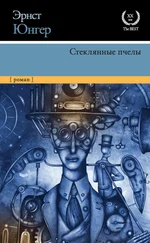VINCENNES, 27 APRIL 1941
First Sunday in Paris. In the meantime, I have moved to an apartment that provides a lovely view of the Donjon des Forts. Powerful feeling of melancholy. Afternoon, to the zoo in Vincennes. Giraffes were eating dried acacia leaves from a high trough, picking them out with their long, pointed tongues. Black bears, a pride of cheetahs, Alpine rams from Corsica posing on the crags of a mighty cliff. The stupendous aspect of these pageants: they speak, but we no longer understand their divine nature.
VINCENNES, 28 APRIL 1941
Stroll through the streets and alleys of Vincennes. Details: a man with a slender sickle mowing the grass of a railroad embankment next to a busy street and stuffing the clippings into a sack, probably collecting fodder for rabbits. In his other hand, he held a small basket to collect little snails that fell out of the grass as he worked. In the outskirts of the big cities, scenes of Chinese frugality are often evident—they bring to mind the grasses and herbs that grow in the crevices of a wall.
VINCENNES, 29 APRIL 1941
Hôtel de Ville and Quais de la Seine; [3] Quai : public path along a waterway; a wharf or bank where ships’ cargo is unloaded.
took stock of expenditures. Tristitia [melancholy]. Looked for solutions; only doubtful ones presented themselves. The monsters of Nôtre-Dame are more brutish than those of Laon. These incarnations stare so knowingly out over the roofs of the cosmopolitan city, surveying realms of lost knowledge—the knowledge, yes, but its existence as well?
At Prunier, Rue Duphot. The little room on the first floor is cool and cheerful, with its aquamarine atmosphere, very inviting for the enjoyment of seafood. The round church very nearby; a fig tree flourishes at its wall. Then the Madeleine—a church despite everything. Boulevard des Capucines. The Blitzmädchen [4] Member of the female Wehrmacht auxiliary.
whom I had noticed the day before yesterday on the Place de l’Étoile, [5] The Arc de Triomphe stands at the center of this junction of twelve avenues that form a star ( étoile ) pattern, hence the “Square of the Star.” In 1970 the square was officially renamed Place Charles de Gaulle. E. J. usually refers to this spot simply as the Étoile .
a tall West Slavic type with long wavy hair. The strange feeling when we begin to notice and pay attention to each other. It is we who beget relationships; a new human being is like a seed that originates deep inside us. An alien image inhabits us; it is like a small wound, a gentle pain when it marks us. How well women know this phenomenon; it always intensifies when the encounter is repeated.
Telephoned Schlumberger. But like almost all my earlier acquaintances, he is not staying in Paris. When I looked for an escape route between the Pont Neuf and the Pont des Arts, it became clear to me that the labyrinthine nature of our position resides only inside us. This makes the use of force destructive; that would demolish walls, chambers in ourselves—that is not the path to freedom. The hours regulate themselves from the inner mechanism of the clock. When we move the hand, we change the numbers but not the course of fate. No matter where we desert to, we carry the full military kit with us, inborn. Even in suicide, we cannot escape ourselves. We must ascend, sometimes by suffering; then the world becomes more comprehensible.
VINCENNES, 1 MAY 1941
Sacré Coeur. Chevalier de la Barre was gruesomely executed at a very early age for not showing proper respect during a procession. I recently read his story in Voltaire. A statue of him at the martyr’s stake stands in the consecrated area of the church as an altar to Freemasonry. The choice of the space lends the monument a dialectical flavor and disrupts commiseration with the fate of the unfortunate man. We raise our finger in warning as we leave him.
Then Place des Ternes. I bought a small bouquet of lilies of the valley in celebration of the day. These were probably responsible for my encounter with Renée, a young office clerk in a department store. The city effortlessly produces such couplings, but then one can’t help notice that it was founded on the altar of Venus. It’s in the water and in the air. I now sense that more clearly than when I lived here for the first year and a half of the war isolated in barracks and garrisons and billeted on farms. In long periods of asceticism when we tame our thoughts, we get a foretaste of the wisdom of old age, of serenity.
Ate, then went to the cinema; there I touched her breast. A hot iceberg, a hill in the spring, filled with myriad seeds of life, perhaps something like white anemones. During the newsreel, the room remained illuminated to prevent any demonstrations. Our offensives in Africa, Serbia, and Greece were shown. The mere glimpse of the weapons of annihilation produced screams of fear. Their automated nature, the way the steel plates of the tanks glide, the way the ammunition belts with their bright projectiles are swallowed as they fire. The rings, hinges, armor, observation slits, sections of the tank, the arsenal of life-forms that harden like crustaceans, toads, crocodiles, and insects—Hieronymus Bosch had already envisioned them.
Subject for study: the ways propaganda turns into terror. The beginnings in particular contained much that people are going to forget. That is when power walks on cats’ paws, subtle and cunning.
We said goodbye at the opera, probably never to meet again.
VINCENNES, 3 MAY 1941
In the sunshine in front of Brasserie Lorraine on the Place des Ternes. These are the moments when I can breathe, like a drowning man. Opposite me a girl in red and blue who combines absolute beauty with an icy manner—a pattern of frost crystals. Whoever thaws her, destroys the form.
When I turn off the light I am gladdened by the thought that I shall now be alone for eight, nine hours. I seek solitude as my cave. I also like waking up now and then to enjoy it.
VINCENNES, 7 MAY 1941
On the Place des Ternes in front of the Brasserie again—a pleasant spot I find so appealing. I usually sit here in the sun drinking a cup of tea and enjoying some paper-thin sandwiches—almost wafers, which I dedicate to the memory of past abundance. Then, across the Champs-Élysées to Rue Duphot. I always enjoy seeing the fig tree at its entrance in front of the small church.
The cliffs of porphyry. Even plants and animals have to differentiate themselves from everything else on the earth.
VINCENNES, 10 MAY 1941
Jardin des Plantes. A jujube tree in full bloom. Some of the blossoms sprang directly from the trunk, so that they gleamed from afar in like coral branches or clumps of pink bees.
Large black or amber-colored cats can be seen napping in the shop windows. Then the Paulownia [princess tree; foxglove tree] trees, still without leaves, blooming in the allées or in large groups on the squares. Their delicate violet veils cast a spell over the silver-gray stone. Amethysts on elephant hide.
VINCENNES, 11 MAY 1941
I drove to the Place des Ternes as usual. At the Bastille, I was overcome by the desire to get out. I found myself in a crowd of thousands, the only one in uniform, not to mention that it was the Feast of Joan of Arc. Still, I took a certain pleasure in walking around and meditating, the way one would walk through a powder magazine, dreaming while holding a burning candle. I later discovered that there had been a few disturbances at the Place de la Concorde.
VINCENNES, 12 MAY 1941
They placed us barefoot around a bright fire and moved us close to it so we could see the skin first reddening, then becoming like parchment, and then cracking open. Then they scourged them with whips. Bundles of vipers were attached to the handles instead of cords. They sank their teeth into the raw flesh, and I experienced the bites as relief when compared with the pain of the fire.
Читать дальше

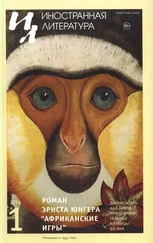

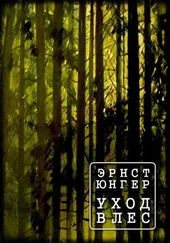

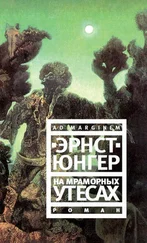

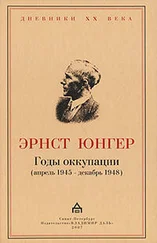
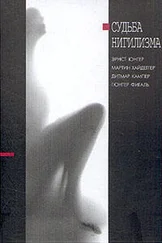
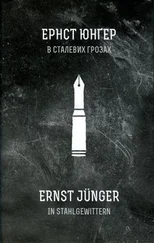
![Эрнст Юнгер - Стеклянные пчелы [litres]](/books/410842/ernst-yunger-steklyannye-pchely-litres-thumb.webp)
